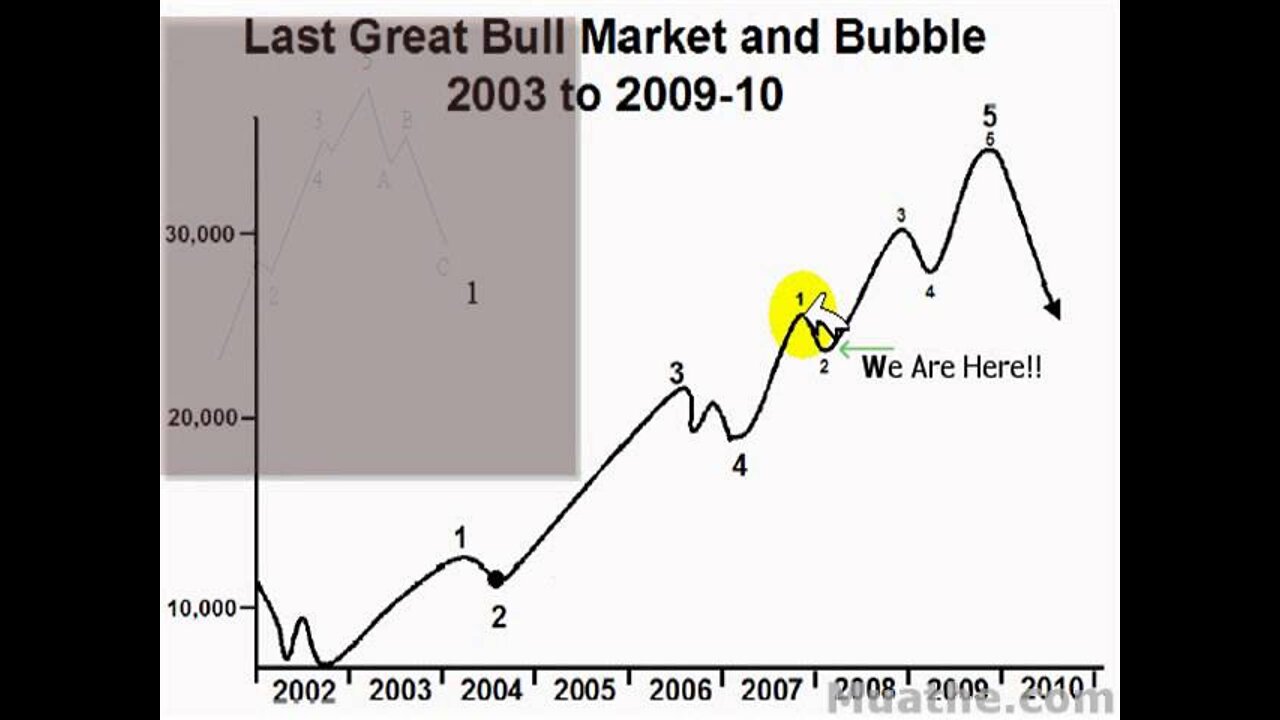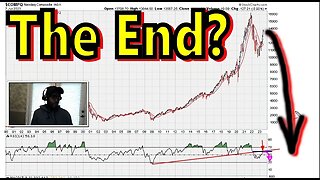Premium Only Content

DOW 25,000 By 2011 - Part 8 of 10
Elliott Wave analysts (or "Elliotticians") may not need to look at a price chart to judge where a market is in its wave pattern. Each wave has its own "signature" which often reflects the psychology of the moment. Understanding how and why the waves develop is the key to applying the Wave Principle; that understanding includes recognizing the characteristics described below.[2]
These wave characteristics assume a bull market in equities. The characteristics apply in reverse in bear markets.
Grand supercycle: multi-decade to multi-century
Supercycle: a few years to a few decades
Cycle: one year to a few years
Primary: a few months to a couple of years
Intermediate: weeks to months
Minor: weeks
Minute: days
Minuette: hours
Subminuette: minutes
ABIX, ACCL, APLX, ATSI, BIOF, CHNR, CPWM, CRDC, DATA, FSTR, GCBC, GENR, INSW, INXIW, JRJC, PINN, REFR, SLXP, SPIR, TPTX, TSCC, UBCP, VIRC, WBPRN, WINN, ANV, AXK, BKR, BYW-WT, BZI, DCU, DDD, EAD, ETC, HDS-WT, HWK, IMM, IRN, IVA, PLG, PLX, PNS, SRS, SVA, THK, TKO, TTG, UPI, WSB, YMI, APU, CAE, CFI, CHP, COA, CXO, DEP, DRL, DVR, EJ, ENT, EXM, FLO, FRX, GNK, JQC, MDG, MZ, NCV, OII, PIR, TPX, VC, WPL, WTI
-
 19:54
19:54
Muathe.com
1 year ago $0.02 earned🟢 MAJOR Bear Market Has Began!? Stocks, Crypto
85 -
 LIVE
LIVE
The Dilley Show
2 hours agoRoger Stone in Studio plus Q&A Friday! w/Author Brenden Dilley 12/27/2024
3,929 watching -
 LIVE
LIVE
The Charlie Kirk Show
1 hour agoThe Great H-1B Battle + AMA | Lomez | 12.27.24
7,659 watching -
 11:39
11:39
Russell Brand
1 day agoWhat You're Not Being Told About The Syrian War
100K184 -
 DVR
DVR
Bannons War Room
1 year agoWarRoom Live
101M -
 LIVE
LIVE
Film Threat
4 hours agoBEST AND WORST OF 2024 + SQUID GAME SEASON 2 | Film Threat Livecast
505 watching -
 LIVE
LIVE
The Big Mig™
17 hours agoGlobal Finance Forum Powered By Genesis Gold Group
2,221 watching -
 34:38
34:38
Tudor Dixon
2 hours agoThe Changing Landscape Between Tech and Politics with Mike Benz | The Tudor Dixon Podcast
3.85K1 -
 2:23:58
2:23:58
Matt Kohrs
13 hours agoRumble's Stock Is EXPLODING!!! || The MK Show
60.9K6 -
 LIVE
LIVE
LFA TV
15 hours agoBOMBSHELL FINAL REPORT: BIDEN ADMIN SUPPRESSED WUHAN LAB LEAK | LIVE FROM AMERICA 12.27.24 11am EST
1,808 watching